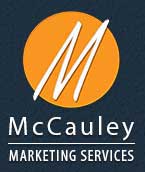In-School Advertising Programs
 In our economic crisis, public schools are taking the necessary steps to ease the financial stress ever-limited government budgets imply. A marketing company in Minnesota, OMCM Marketing Solutions, developed an in-school advertising program that is speculated to help schools earn up to $200,000 in extra income. One Minnesota school district has already started using the program while others continue to debate the advantages and disadvantages.
In our economic crisis, public schools are taking the necessary steps to ease the financial stress ever-limited government budgets imply. A marketing company in Minnesota, OMCM Marketing Solutions, developed an in-school advertising program that is speculated to help schools earn up to $200,000 in extra income. One Minnesota school district has already started using the program while others continue to debate the advantages and disadvantages.
The program covers school’s lockers, walls, and even floors with graphically designed, vinyl advertisements. Elementary, middle, and high schools using these programs can designate up to 10% of the properties’ surface area to market education, nutrition, health, and wellness. The invasive nature of these campaigns worries some parents because children (especially those in elementary schools) are so impressionable to advertisements. Protesting parents also claim that such advertising would force certain thoughts and create false needs in children’s minds instead of fostering the critical thinking process.
If the previous lawsuits involving the Camel cigarette brand and toys in fast food meals are any indication, the general public finds marketing directly to children inappropriate and unethical. However, McCauley Marketing Services asks, what if they are valuable advertisements? What if they promote long-term, healthy lifestyle choices?
The President of OMCM Marketing Solutions claims that ads in schools are only used if they’ve been deemed beneficial to school children. The program’s naysayers suggest that the campaigns will quickly become more about profit than potential benefit to the children. Any marketing company that strives to maintain customer relationship management as part of its business model would be very careful not to compromise schools’ values in order to produce a profitable program.
The Minnesota district that has adopted this program plans to compare the campaigns’ profitability versus the ads’ distraction/psychological effects on students at the end of the year. Only long-term studies, like this one, will reveal the true effectiveness of in-school advertising. While this new advertising audience is promising to marketing companies, it’s not likely to be adopted without a fight, given that parents already worry about their children’s over-exposure to media and the increased strength of FCC guidelines.
Continue to read our blog for more marketing and advertising news, and visit our website for more information on graphic design, public relations, marketing, and advertising.
